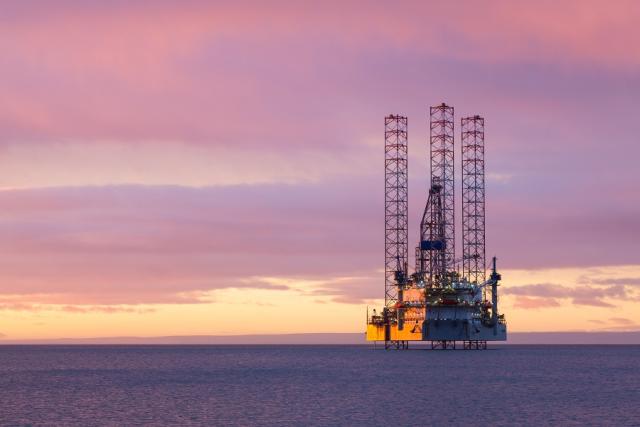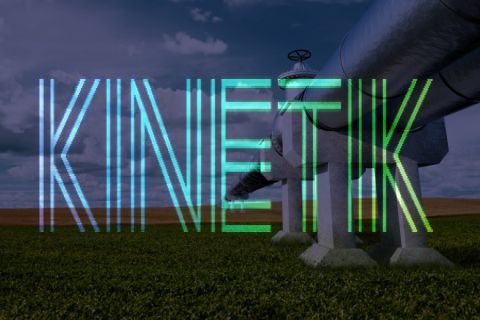
Murphy Oil increased production and pay down debt with the help of King’s Quay project going onstream in the Gulf of Mexico and high output from new Eagle Ford wells. (Source: Matt Cross/ Shutterstock.com)
After increasing net income, reducing debt and completing a significant development project in the Gulf of Mexico (GoM), Murphy Oil said it’s entering a new phase — “Murphy 2.0” — that will return more free cash flow (FCF) to shareholders.
The company reported fourth-quarter net income of $199 million ($173 million adjusted), and $965 million ($881 million adjusted) for the year, according to results Murphy announced on Jan. 26.
Murphy, which operates in the GoM, Canada and South Texas, also reported its preliminary year-end results and touted its execution on multiple fronts.
In 2022, the company completed its Khaleesi, Mormont and Samurai field development project in the GoM, bringing seven wells online. In Canada and the Eagle Ford Shale, the company brought 50 operated wells online. Murphy’s 2023 capital guidance calls for spending $455 million onshore and $365 million offshore.
During the company’s Jan. 26 conference call, President and CEO Roger W. Jenkins said the company pared down debt in 2022 by $650 million. Since 2020, the company has reduced its borrowings by 40% to end 2022 with debt of $1.82 billion.
In the “Murphy 2.0” phase, the company plans to dedicate 75% of its adjusted FCF to debt reduction and 25% of adjusted FCF to shareholder returns.
Murphy has already more than doubled its quarterly cash dividend since fourth-quarter 2021 to $1 per share, annualized.
The company plans to increase its first-quarter 2023 dividend 10% to $0.275. Murphy is targeted a further $500 million in debt reduction for the year. In third-quarter 2022, the board authorized a $300 million share buyback.
Murphy also touted its operations, including a spike in oil production for the year.
Murphy’s fourth-quarter production averaged 173,600 boe/d, led by its offshore production (50%), offshore Canada (31%) and the Eagle Ford (19%). Since first-quarter 2022, oil production grew 30% to 97,000 bbl/d.
For the year, “our company produced 167,000 barrels of oil equivalent per day with nearly 90,000 barrels of oil, or 54%,” Jenkins said. “This represents a 6% increase in total production from full year 21.”
Offshore production, exploration updates
Contributing to the 2022 production increase was King’s Quay, a deepwater GoM development that started production in April. The King’s Quay floating production system is producing more than expected from wells in the Khaleesi, Mormont and Samurai fields, said Eric M. Hambly, executive vice president of operations.
“We recently drilled a successful well at Samurai five after previously discovering additional pay zones in the Samurai Field during the initial phase of development,” Hambly said.
A new well is scheduled to come online in second-quarter 2023, and Murphy forecast production to plateau across the three fields for the next several years without additional development.
The recently drilled Samurai five well “is a great deal for us,” Hambly said. “We now think that Samurai could be near a 100-million-barrel discovery from exploration out there.”
Hambly said Murphy expects full-cycle payout in second-quarter 2023 for the King’s Quay project — five years earlier than expected.
Elsewhere in the GoM:
• Murphy drilled the Dalmatian development well, which is expected to begin production in the third quarter, and spudded the Oso-1 deepwater well, which is still being drilled. “We anticipate that we will reach TD [total depth] in March. We estimate a mean upward gross resource potential of 155 [million] to 320 million barrels of oil equivalent from Oso,” Hambly said.
• One non-operated Lucius subsea tieback went online at the end of 2022, and the second is expected to begin production later this quarter. The non-operated Kodiak subsea tieback went online in third-quarter 2022 but is performing below expectations.
• The non-operated St. Malo waterflood project is moving forward with water injection expected to begin in early 2024.
Eagle Ford, Canada updates
Onshore, in the Eagle Ford, Hambly said Murphy brought on 27 operated wells and 15 non-operated wells in 2022.
In Canada, Murphy brought 20 operated wells online from its Tupper Montney acreage and three operated wells from its Kaybob Duvernay acreage.
Hambly said Murphy’s new completions design, applied throughout 2022, has “achieved results above expectations.”
For the year, the company’s also hit its highest water recycling ratio in company history, according to Thomas J. “Tom” Mireles, executive vice president and CFO.
Murphy recycled 3 MMbbl of water last year, which represents 28% of the company’s total onshore water use. In 2021, Murphy recycled 18% of its water.
The company’s emissions intensity in 2022 was also improved over 2021 levels, Mireles said.
“In 2022, the team reduced our emissions intensity by 5%, and we recorded lower flared volumes onshore both to the lowest level on company record,” he said.
Jenkins said the company’s 2023 capital plan has a spending range from $875 million to $1.025 billion.
“More than two-thirds of our spending is scheduled to occur in the first half of the year with approximately 70% of our development capital going towards operated projects,” he said.
In 2023, Murphy plans an onshore capital budget of $455 million, with $325 million earmarked for the Eagle Ford, $125 million for Tupper Montney and $5 million for Kaybob Duvernay.
“We plan to spend $325 million to bring online 35 operated and 17 gross non-operated wells with the majority coming online in the second and third quarter,” Jenkins said.
The operator’s offshore capital budget is $365 million, with $335 million going to GoM projects and $30 million for projects offshore Canada.
“We're planning to spend $335 million on operated subsea tieback wells at Samurai, Dalmatian and Marmalard, as well as two non-operated Lucius Wells and a non-operated development in the St. Malo field,” Jenkins said.
Recommended Reading
Martin Resource Sidesteps Firms’ Criticism, Offer for Midstream MLP
2024-07-11 - Martin Resource Management, which in May proposed buying spinoff Martin Midstream Partners, responded to two capital firms’ counteroffer made public July 11 by saying it’s not interested.
Martin Resource Offers to Buy Spinoff Martin Midstream for $100.3MM
2024-05-27 - Martin Resource Management created Martin Midstream through an IPO in 2002.
Kinetik Launches Delaware Basin M&A Valued at $1.3B
2024-05-09 - Kinetik Holdings will buy Durango Permian infrastructure for $765 million, excluding contingency payments, and sell its interests in the Gulf Coast Express pipeline to AcrLight Capital Partners for $540 million.
Energy Transfer Picks Up Last of Permian’s Big, Private Midstreamers
2024-05-29 - Energy Transfer’s $3.25 billion deal for WTG Midstream aside, plenty of smaller midstream companies are available for M&A, an analyst says.
Enbridge Closes $4.3B Deal for NatGas Utility Questar Gas
2024-06-05 - Following the closing of its deal for Questar Gas Co., Canadian midstream company Enbridge Inc. is nearing the full completion of its acquisition of three U.S. gas utilities.






